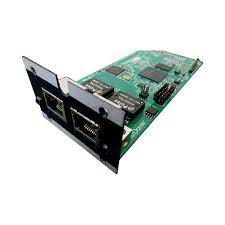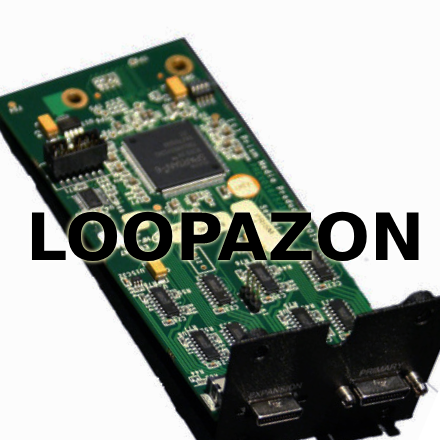The Prism Audio MDIO Dante Module
Form a band online, promote your music, buy custom beats, sound parts, and share your Beat or Track as a Royalty Free loop with us. Collaborate to make beats online with the best loop makers from around the world on the Forum for musicians and beat makers. Keep up to date with Music News and learn from FL Studio Video Tutorials and the articles on the Blog. Free DAW Music Software downloads, VST and Instrument Packs for FL Studio, Pro Tools, Logic, Ableton, and how to use the most popular free DAW Software, Fruity Loop Plugins, MIDIs and more.

The Prism Audio MDIO Dante Module
Prism Sound's MDIO Dante an expansion card that allows you to send and receive audio using Dante, gives your Atlas or Titan the option of routing every channel over one wire. The MDIO-Dante extension card is an industry standard in the studio and audio-visual arena. It allows to route of every clean and bright signal from Prism Sounds AD and DA converters via a CAT5e, CAT6, or fiber-optic connection. It not only aids in the routing of Atlas or Titan signals but helps to work with the Dante workflow, giving you access to hundreds and hundreds of audio streams that are connected through logical routes. You can expand the routing possibilities by adding the Prism Sound MDIO-Dante card to Titan or Atlas
Features of The Prism Sound MDIO Dante
1. Expansion of Dante for Prism Sound interfaces. 2. Explicitly designed for the Atlas and Titan models. 3. It's possible to integrate it with a Dante system. 4. Supports Dante audio via CAT5e, CAT6, and even fiber-optic connection. 5. Extensively adaptable for integration with tens of thousands of channels from a variety of sources.
Dante is a rapid audio networking protocol that has become the industry standard. It has solidified its place as the premier replacement to other AoIP systems by providing ultra-low latency, flawless sync, and expandability over large channel counts. Dante's numerous advantages have made it the cornerstone of some of the world's most prominent recording, broadcast, and educational organizations.
Dante specializes in maintaining, modifying, and troubleshooting complicated audio distribution services. Wiring a studio or whole post facility with just one standard ethernet wire per audio equipment is straightforward, clean, and cost-effective. The immensely time-consuming and expensive process of digging up analog or multicore cables has become a thing of the past, eliminating downtime and allowing you to focus on the task at hand.
The MDIO-DANTE module installs quickly and easily. In a matter of minutes, you can breathe new life and do routing in the studio. The ease of setting guarantees that your system's only restriction is your imagination. The Titan and Atlas are the genuine expert's options in networked audio, so gratitude to Dante's excellent networking features and Prism Sound's acclaimed conversion. Multiple Titan or Atlas devices can be linked directly to a DANTE network using the DANTE module.
DANTE users may make use of the Titan and Atlas A/D and D/A converters' superb sound quality, as well as their equally highly-regarded onboard microphone preamplifiers, using this combination. John Gatski of Everything Audio Network recently called Titan "the pinnacle of USB recording" with "excellent converters and mic preamp." When linked to DANTE, controlling the Prism Sound Titan or Atlas devices is simple. The devices are operated by a specific software app accessible for both Mac and Windows when connected via a network. This allows you to operate the devices from any networked computer or via its dedicated USB connection. Unlike many third-party interfaces, which cannot be recalled, the setup information may be saved for fast retrieval within the specialized
Dante's signal routing and system configuration are quick, easy, and very adaptable. Dante Controller software identifies each device on the network, where the routing of audio, labeling devices, and network configuration is done in real-time. These systems are extremely scalable, ranging from basic console-to-computer connections to large networks with hundreds and hundreds of audio channels. The logic route allows networks to be expanded and altered at any moment.

Dante is used by more audio-visual manufacturers than any other networking standard, allowing you to choose from hundreds of Dante-enabled equipment. All Dante products are interoperable, enabling you to mix and match devices from various manufacturers in a single network. All of this can be done with only one wire. Dante eliminates bulky, costly analog or multicore wiring in favor of low-cost, readily accessible CAT5e, CAT6, or fiber optic cable. Dante is a simple, lightweight, and cost-effective option that only requires one wire per device.
The manufacturer does not advocate using this equipment and its host interface unit with non-shielded interface wiring, as it may result in improper regulation with other regulations. All parallel connections must be done with a 75R cable that is adequately screened on both ends, with the screen linked to the connector's outer. Screened cable should be used for all analog XLR and jack connections, attached to pin 1 of the XLR connector or the jack outer on each end.
To update the Atlas Firmware
-
There is a need to update Firmware because every previously made setting will be canceled. After updating, you should save and reload. If you utilize the volume control, headphone bus, or any other unique routings, ensure they're all configured before playing the audio after updating.
-
The power wire should be from the back of the computer, but keep the USB attached.
-
Now start the Control Panel.
-
The Volume knob and Standby button are pressed and held for a few seconds.
-
Replace the power cable now.
-
The 'X-Bootloader' window appears.
-
Select the new firmware file with the 'Browse' button.
-
Press Load, and when the progress button reaches 100%, the Launch button appears again
-
When you press the Launch button, the Atlas unit starts again.
Connections to be done in the computer using MDIO Dante Module
You should remove the lid to connect the MDIO-PTHDX module to a compatible Prism Sound Interface. The voltages are hazardous. Before removing the cover, anybody installing the MDIO-PTHDX module must verify that the unit's mains supply is removed and not reconnected until the cover is replaced. Disconnect any additional connections from the unit's back and front. You're now ready to install the Dante module.
-
A Gigabit Ethernet switch and CAT5e or CAT6 cables are required to connect the Prism Sound Atlas unit(s) to a network.
-
The computers utilized with the Atlas(es) should have the same network, and at least one should have the Prism Sound control panel software. The program may be installed and operated on several computers, which would be helpful.
-
Dante will not function via a wireless network that includes laptops, as it should be physically linked through CAT5e or CAT6 cables. Two RJ45 network connections are available on the MDIO-Dante module. You need only one connection to any of them for a fast start. The 'Primary' connection is PRI, and the Secondary connection is SEC. On the rear of the Atlas and Titan, behind the 'Word Clock Out' BNC connector, there is one more RJ45 port. This port is disabled therefore do not connect a network cable to it.
-
Dante Controller software is available for download and installation. To connect to the Dante network, this software is required. The Dante Controller should be linked to the Dante network.
-
A soundcard interface is a must to use Atlas with DAW Software.
-
You might want to connect your audio inputs and outputs right now.
-
The power is connected to the Atlas unit.
-
The Volume is pressed for a few seconds. Now you have to set everything to MDIO-Dante mode. The front panel appears red in color.
-
Now launch Dante Controller on one of the Dante network PCs. The Atlas unit(s) and other Dante devices (including DVS and the Dante PCIe card) connected to the network should be visible. Don't get too excited if Dante Controller takes a few seconds to recognize the Atlas.
-
In the Dante Controller's Routing grid, you can set up network routings and link the Atlas to the Dante Sound card. Select the Dante soundcard driver before installing DAW software.DVDs or the Dante PCIe card are a good example. Whatever is played through the driver's 'TX' outputs will be routed through the Dante Controller grid to whatever Atlas Output/RX channel is specified. It will sound the same when you route audio from the Atlas' Inputs/TX channels to the driver's RX channel.
